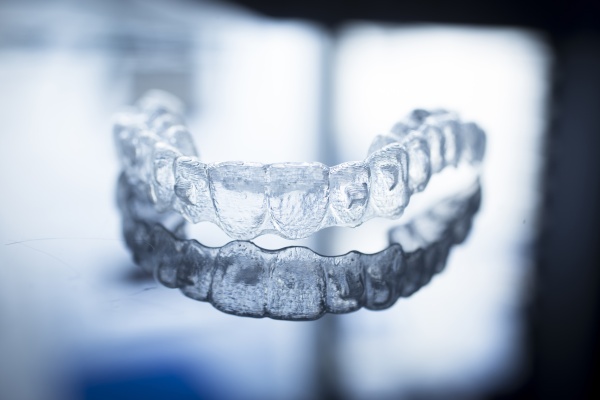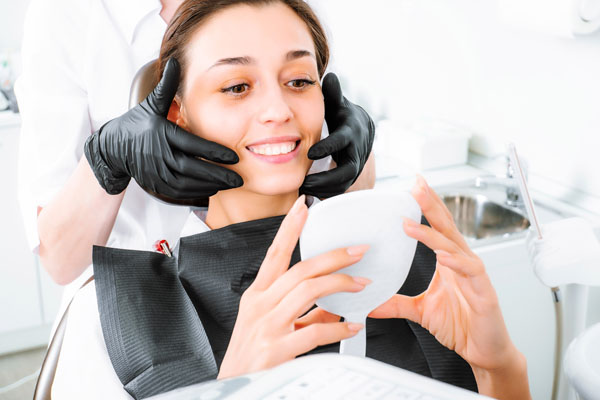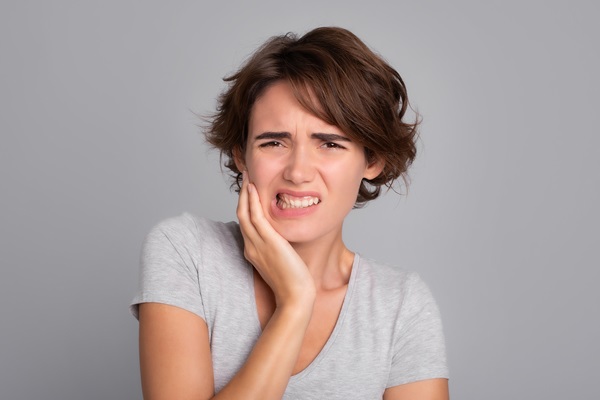Is Invisalign® Painful?

More people are choosing Invisalign aligners to correct problems with their teeth. These aligners allow them to get much needed orthodontic treatment discreetly. However, there are a lot of people in need of orthodontic treatment that are hesitant to get treatment because they think wearing Invisalign aligners will hurt.
To put their minds at ease, we will discuss how the aligners work and if wearing them causes pain.
Does Invisalign cause pain?
One of the most common questions dentists get asked when it comes to Invisalign aligners is whether or not they hurt. Unlike traditional braces, which are known to cause some pain, Invisalign aligners are marketed as pain-free alternatives. However, that does not mean they do not hurt.
Invisalign causes less pain
When it comes to straightening teeth, the teeth have to be moved from one position to another. Since the teeth have to be moved, there will be some pain associated with teeth straightening regardless of the orthodontic appliance used to achieve it.
So, to answer the question, Invisalign aligners do hurt. However, they are less painful than traditional braces and the pain fades after the teeth get used to the aligners. There is also some soreness that is caused by the aligners pressing against the teeth, and some pain from having the aligners in the mouth.
Overcoming the initial discomfort
In some cases, people who use Invisalign aligners complain about irritation. This is usually caused by the edges of the aligners irritating the gums and inner lips as the mouth gets used to them. After the first couple of weeks, the mouth will adjust to the aligners and will develop callouses to prevent further irritation.
By the time a patient is done with their first set of aligners, the mouth will be used to them and the patient should not be in any more pain. The aligner will not cause any more pain or irritation once the mouth adjusts to them. However, the patient will still experience a little pain as the teeth gradually shift into their desired position.
How to reduce the pain associated with Invisalign aligners
For a lot of Invisalign users, the pain associated with them is bearable. For others, the pain might make them remove the aligners, which will affect their treatment. For those in the latter category, pain relief can be achieved with over-the-counter painkillers. If the pain is in the jaw, the dentist can prescribe a painkiller that is also a muscle relaxer, which should help keep the jaw muscles relaxed.
In some cases, the pain is caused by the edges of the aligners, if they are too rough or sharp. This can be fixed by taking the Invisalign aligners to the dentist to get the edges smoothed out.
Conclusion
Invisalign aligners do a great job when it comes to straightening teeth and fixing bite problems. However, they might also cause some pain. If you are thinking of fixing your teeth with Invisalign, ask your dentist for more ways to deal with the pain associated with them.
Request an appointment here: https://metrosmiles.com or call Metro Smiles Dental at (718) 841-9591 for an appointment in our Forest Hills office.
Check out what others are saying about our services on Yelp: Read our Yelp reviews.
Recent Posts
Dental restorations have been used for thousands of years. In fact, a 2012 article published by The New York Times details the discovery of a 6,500-year-old human jawbone. Considered the earliest evidence of dental fillings, it had beeswax in one tooth, which researchers believe was to ease the pain of a crack. These days, restorations…
Dental anxiety affects millions of people in the U.S. This anxiety can often prevent patients from getting treatments that can keep oral diseases like tooth decay and gum disease away or prevents them from getting worse. Dental phobias can be the result of previous bad experiences with dentists, or they can be caused by a…
Crowns are commonly used in dental restorations. A crown is a cap shaped like a tooth but hollow in the middle. It fits over a natural tooth that has to be prepared first. Depending on the issue it is correcting, a crown can be used by itself or as a component of another restoration technique.Teeth…
Dental restorations are used to repair or strengthen damaged teeth and to replace missing teeth. The damage may be the result of routine decay, extensive decay, fractures, weak gums, and many other dental issues. Dentists recommend restorations based on the tooth, its location, the source of trouble, the health of surrounding teeth, tooth color, patient…


